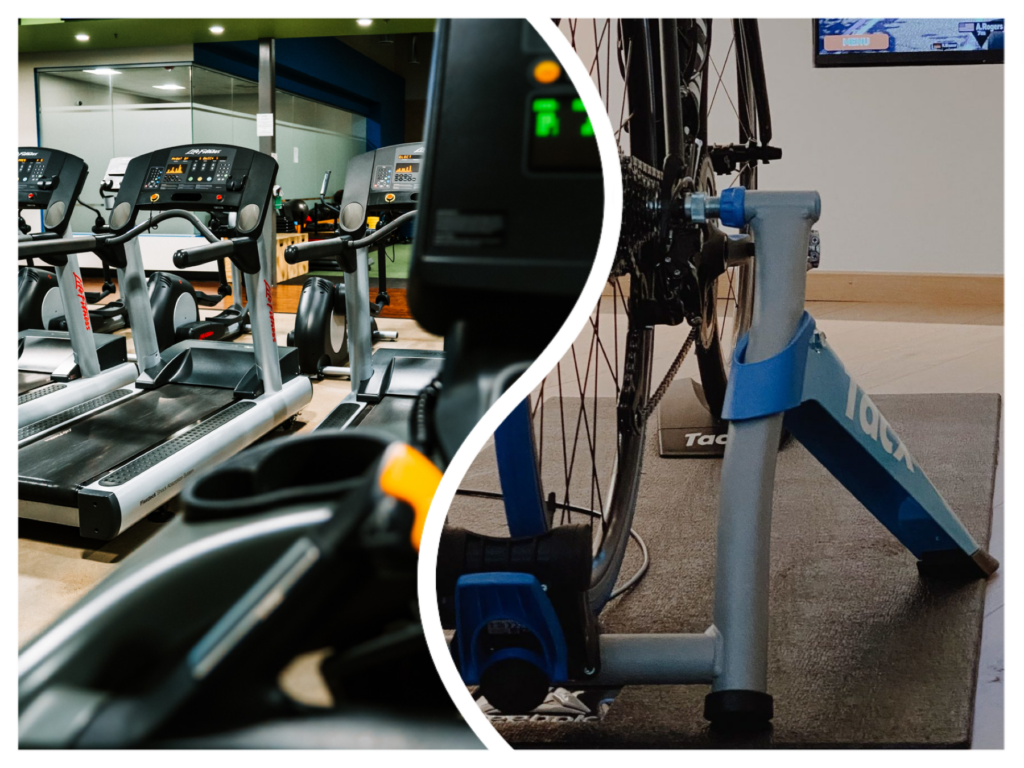Learning to Embrace Indoor Workouts

Many endurance athletes train outdoors to prepare for their upcoming races. Altering their training to include sessions to adapt to the race course, such as hills, intervals, and speed work, is part of their training program. Some endurance athletes believe that training outside is the only way to succeed on race day. Other endurance athletes blend a mix of indoor workouts on the treadmill or indoor bike trainer with their outside workouts and adapt their training appropriately, experiencing the same benefits as an outdoor workout. The indoor workouts tend to be hard on the athletes from a mental standpoint. Learning to embrace indoor workouts can boost your training as an endurance athlete.
Reasons Athletes Avoid Indoor Workouts
There are several reasons! Some athletes might feel that their workout isn’t as intense as it is when they’re outside or that the quality of their workout is altered when training indoors. They could have the mentality that they’re “taking the easy way out.” Boredom is another reason. Some athletes find that when they work out, they take in the scenery and part of the environment. They enjoy feeling the outdoor temperature, simulating race day situations, and connecting with other athletes. When working out indoors, some athletes might fear being bored. This could be because they may wonder how they will occupy their minds during the training session. Also, some athletes find the treadmill or indoor trainer numbers daunting. Another reason some athletes avoid indoor workouts is that they might be fearful that they’re more likely to get injured.
While all of these beliefs are valid for an athlete, the truth is- there’s a time and place for indoor workouts!
Learning To Embrace Indoor Workouts. Questions To Ask Yourself
- What are their training goals?
- Do they have an injury history that requires specific training conditions?
- What is their preference for training?
- Do they have access to training indoors?
Training indoors can be a positive aspect of training for an endurance athlete. If athletes train early in the morning or late at night, they might struggle with certain aspects such as safety, dark training conditions, etc. Opting for an indoor workout might be the solution to put that athlete in a safe environment where they can train optimally. Training indoors can also help athletes when they feel unsafe out on the roads during inclement weather conditions. If an athlete is training indoors, it does not mean they have to be in isolation. Numerous fitness facilities have the equipment for endurance athletes and provide a social support setting, too!
The Power of Mindset Shift: Indoor Workouts as a Vital Component
As athletes evaluate their training programs, they must acknowledge that it doesn’t have to be an all-or-nothing approach. They should feel that they still have control over their training schedules and are implementing workouts accordingly. Changing the mindset of indoor workouts is critical! They serve a purpose and a need for the majority of endurance athletes. Athletes must decide what is best for them and their training goals!
ADVERTISEMENT

JoAnne Bullard is a Doctor of Sport and Performance Psychology and a Certified Mental Performance Consultant through the Association for Applied Sport Psychology. She is also a Certified Strength and Conditioning Specialist through the National Strength and Conditioning Association.
She serves as a tenured Associate Professor at Rowan University and is the owner of Absolute Fitness, LLC. Her goal is to provide a holistically applied approach for clients through performance psychology consulting. She has experience working with athletes of all ages, including endurance athletes, in individual and group sessions. Her research areas include mindfulness, performance anxiety, goal setting, coping strategies, and mental well-being of athletes.
She has completed five marathons, numerous half-marathons, and is always looking for her next race.





